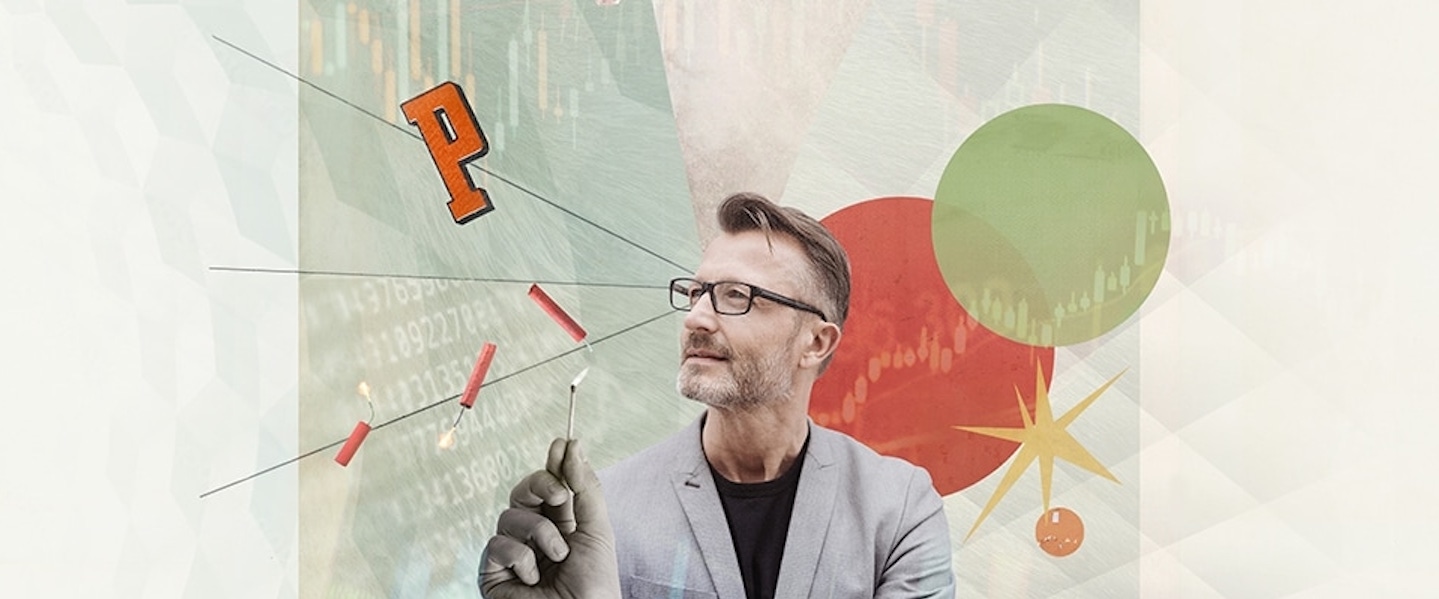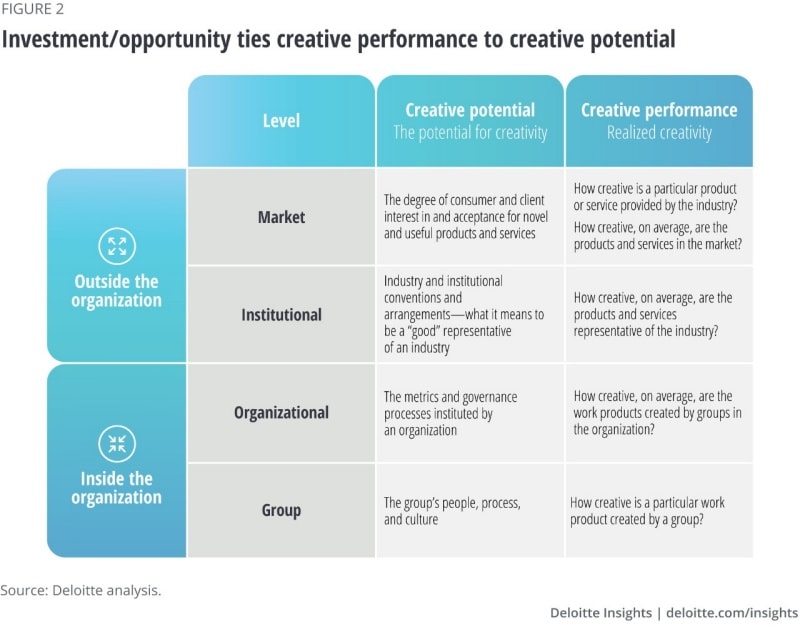We have a new essay published by Deloitte Insights, Investing in creative potential.1Evans-Greenwood, Peter, Robert Hillard, Robbie Robertson, Peter Williams, and Matt Lawson. “Investing in Creative Potential.” Deloitte Insights, May 4, 2022. https://www2.deloitte.com/za/en/insights/topics/innovation/factors-for-creativity-in-business.html. This essay is the third in our series on creativity in business, and explores how a firms leader’s invest to improve the firm’s creativity. The challenge that there is more to creativity than individual skill, and so simply training staff in some creativity technique (such as design thinking) will do very little to improve creativity. We need a more holistic approach.
The first essay in the series, Unshackling the creative business,2Evans-Greenwood, Peter, Robert Hillard, Robbie Robertson, and Peter Williams. 2021, ‘Unshackling the creative business: Breaking the tradeoff between creativity and efficiency’, Deloitte Insights, https://www2.deloitte.com/us/en/insights/topics/innovation/unshackling-creativity-in-business.html. argued that, in business, we tend to think of creativity as a noun, something we have. Creativity is managed as a skill, with creative departments staffed with creative individuals. This works in some domains—typically the creative industries such as fashion—as a tool to develop creative products. It doesn’t, however, make the business more creative. The global pandemic highlighted this as many otherwise creative firms failed to respond to the challenge of lockdowns etc creatively. We need to think of creativity as a noun, and as a verb. Creativity is something we do, and something we do together. This is because creativity in one are of the business is contingent on the creativity of other, otherwise uncreative, areas.
The second essay, Setting the stage for creative performance,3Evans-Greenwood, Peter, Robbie Robertson, Robert Hillard, and Peter Williams. 2021. “Setting the Stage for Creative Performance.” Deloitte Insights, October 29. https://www2.deloitte.com/us/en/insights/topics/talent/creativity-in-business-operations.html. looked into leaders might approach creativity as a verb. This is a significant challenge as creativity operates at multiple levels within an organisation, with each level constraining the creativity of the level below. We also need to think in terms of improving the potential for creativity at a level, as well as creating the space for a creative performance.
Creativity cannot blossom unless we create space for a creative performance. This means putting creativity on an equal footing with efficiency in an organisations operating model. The suggestion in the essay is to develop an investment-opportunity metric to balance cost-benefit. If we fail to do this efficiency will trump creativity every time. The implication being that if we want to develop creative businesses—organisations that consider creativity as both noun and verb—then we need to create the space for creativity by integrating it into every aspect of our operating models.
In this this third essay we explore what it will take to invest in creative potential. This builds on a model from research, the Four P’s of creativity.4M. Rhodes, “An analysis of creativity ,” The Phi Delta Kappan 42, no. 7 (1961): pp. 305–310. https://www.jstor.org/stable/20342603. The creative performance / creative potential distinction in the previous essay is integrated with the Four P’s to create a mud map of what we might invest in.
Combine this with the creative domain—group, organisation, institutional, and market—and we have a structured model for investing in creativity.
We conclude by highlighting how the most important investment that firms can make in creativity is in fostering leadership with the ability to lead a creative organisation.
Perhaps the most important investment in creativity is in developing executive and leadership teams’ ability to lead a creative organization. This is not the same as leaders being personally creative or having a creative leadership style. Rather, it’s the adoption of a fundamentally different mindset from traditional philosophies that insist that all investments lead directly to predictable outcomes.
Investing in creative potential
The biggest barrier is often leadership who want more creativity is but don’t trust the creative process, nor do they trust their own staff.
You can find Investing in creative potential over at Deloitte Insights.
Endnotes
- 1Evans-Greenwood, Peter, Robert Hillard, Robbie Robertson, Peter Williams, and Matt Lawson. “Investing in Creative Potential.” Deloitte Insights, May 4, 2022. https://www2.deloitte.com/za/en/insights/topics/innovation/factors-for-creativity-in-business.html.
- 2Evans-Greenwood, Peter, Robert Hillard, Robbie Robertson, and Peter Williams. 2021, ‘Unshackling the creative business: Breaking the tradeoff between creativity and efficiency’, Deloitte Insights, https://www2.deloitte.com/us/en/insights/topics/innovation/unshackling-creativity-in-business.html.
- 3Evans-Greenwood, Peter, Robbie Robertson, Robert Hillard, and Peter Williams. 2021. “Setting the Stage for Creative Performance.” Deloitte Insights, October 29. https://www2.deloitte.com/us/en/insights/topics/talent/creativity-in-business-operations.html.
- 4M. Rhodes, “An analysis of creativity ,” The Phi Delta Kappan 42, no. 7 (1961): pp. 305–310. https://www.jstor.org/stable/20342603.



[…] our other work—such as being one of the underlying themes in our recent series on creativity in business.4Evans-Greenwood, Peter, Robbie Robertson, Robert Hillard, and Peter Williams. “Unshackling the […]